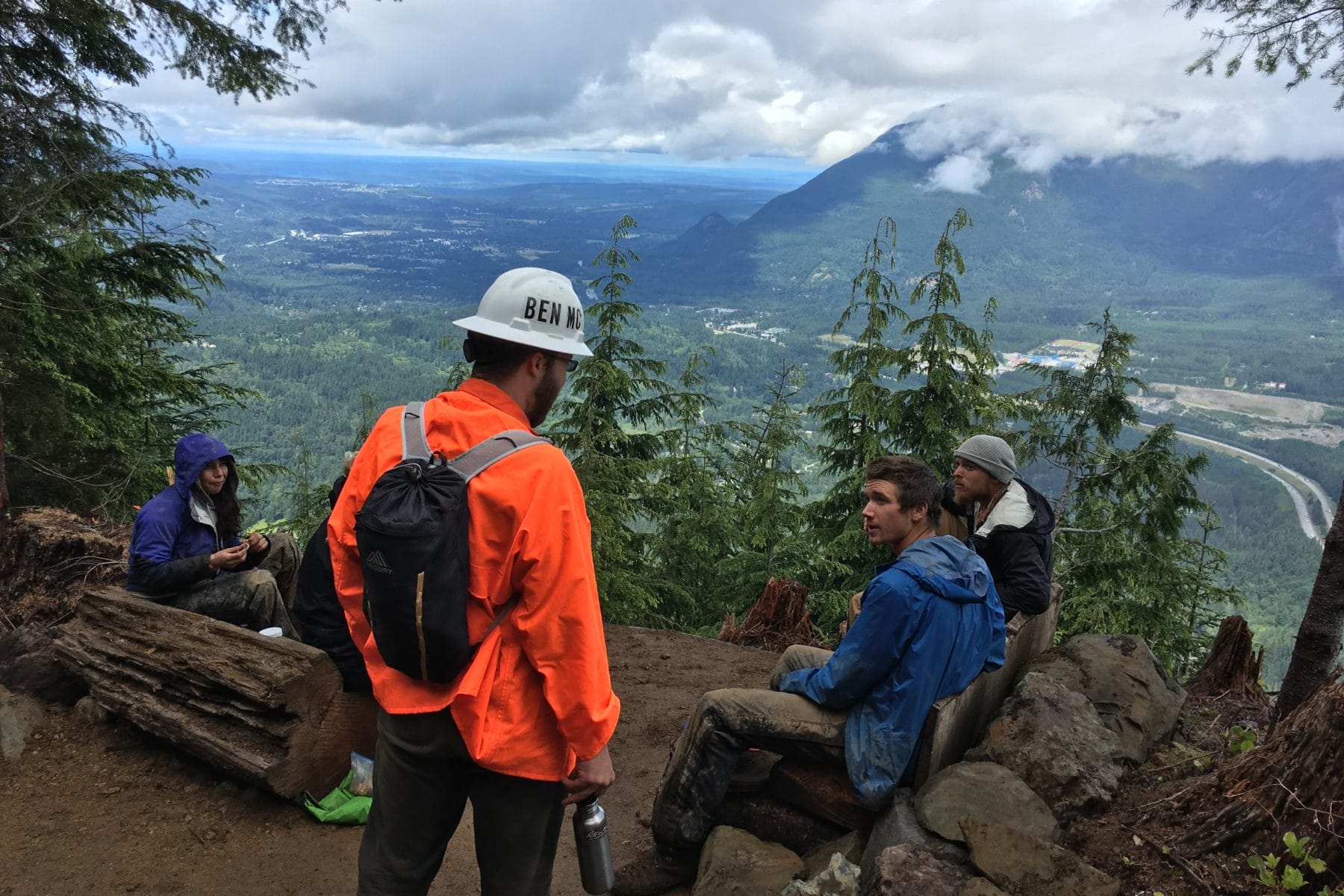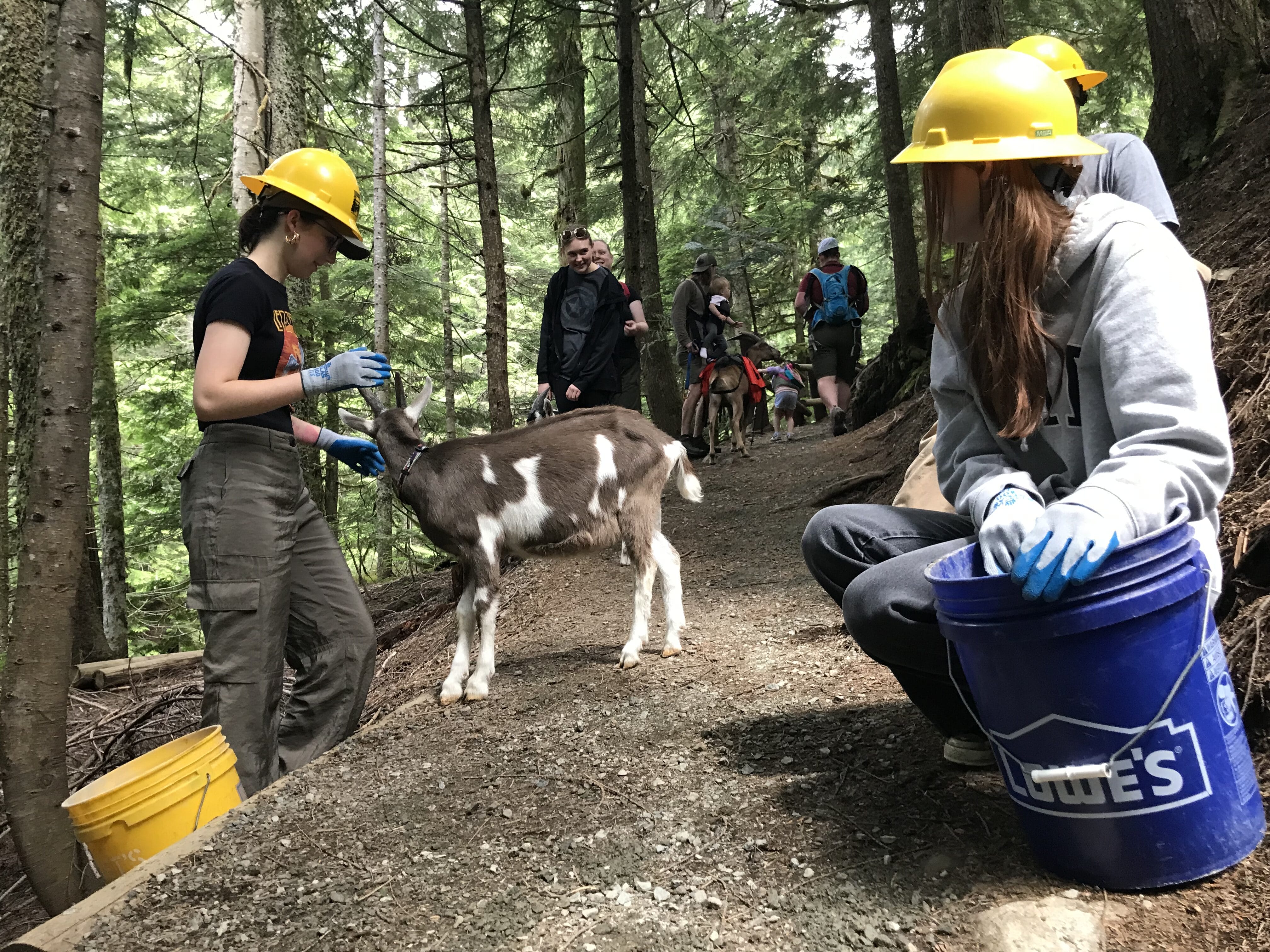Working Together For New Trail on Mt. Washington
Updated July 2017: The first 5.6 miles of this new multiple-use trail is now open! Accessed from Olallie State Park, the new trail provides a challenging long distance mountain biking trail experience, also available for hiking & equestrian use, offering several viewpoints of the Snoqualmie Valley and surrounding mountains along the way. Access the trail by parking at Cedar Falls Trailhead and travelling the John Wayne Pioneer Trail east for two miles to reach the marked trail entry.
The remaining trail segment–which will complete the 8.7 mile trail–is currently under construction and is anticipated to be completed and open by late September 2017, when the new trail name will be announced by Washington State Parks.
= = = = = =
Original post from November 2016:
The soon-to-be-completed trail at Olallie State Park will add an exciting new bike and hike destination just east of North Bend and will eventually become a gateway to a growing network of trails. This 8.7-mile multi-use trail will ascend 2,700 feet along the forested slopes of Mt. Washington, with vistas to some of the Greenway’s most iconic summits: Mt. Si, Mailbox Peak, Mount Teneriffe, Bandera, and McClellan Butte.
This trail project piloted a brand new model for how Washington’s recreation partners can share resources and expertise to build the trails our region needs, and is a demonstration to the value of shared contributions and perseverance.
The idea of building this trail through Olallie State Park started nearly two decades ago when Washington State Parks, under pressure to help develop multi-use trails in the region, first began investigating a network of trails within and east of the Twin Falls area. This initial effort got the wheels rolling, but more work was needed. The U.S. Forest Service, which manages the adjacent lands, then led a second planning effort in the mid-2000s that looked at recreation and forest road management in the South Fork of the Snoqualmie River Basin.
These planning efforts led to a new vision of an integrated network of multi-use trails across federal and state ownership, with the Olallie Trail serving as the future western terminus.
The Greenway Trust worked with State Parks to design the route for the future Olallie Trail, which – along with the necessary permitting preparation – culminated in 2009. Then, our partners at Evergreen Mountain Bike Alliance (EMBA) worked with State Parks to secure funding for the project through the Washington Wildlife and Recreation Program, and committed to providing more than $60,000 in matching value.
But there was one final challenge: State Parks had undergone severe budget cuts and didn’t have the trail construction expertise on staff to build this project on their own. So our coalition leaned in to help. To build the trail, State Parks teamed up with the Greenway Trust, EMBA, and Washington State Department of Natural Resources (DNR).
You might ask: “DNR? But this is a State Park. Don’t they just build trails on DNR land?” Indeed, but DNR has some of the best trail construction management staff in the state. So an outside-the-box idea was proposed: we worked with State Parks on an interagency agreement to bring DNR into the fold to oversee final trail design and layout, and on-the-ground implementation to build this new trail. This was one of the first times that this cross-agency staff sharing has occurred in Washington. The result was so successful that it’s now being used as a model for other State Parks trail projects, such as an upcoming effort to repair Squak Mountain’s Equestrian Loop Trail.
The next ingredient was the labor to build it. That’s where the Greenway Trust and EMBA came in.
The first 4.9 miles of the trail – nearly four of which are brand new singletrack – are being constructed by EMBA. The remaining 3.8 miles of the trail consists of abandoned logging roads, which the Greenway Trust is converting to trail, and one zig-zagging series of switchbacks connecting the two broader segments.
Each organization was able to bring their unique skillset and point of view to the project, resulting in a trail that will be enjoyable for a variety of users, is sustainable, and will connect to a broader network of other multi-use trails in Olallie State Park, Iron Horse State Park, and the adjoining Mount Baker-Snoqualmie National Forest in the future. The Olallie Trail project is a prime example of how collaboration and resource-sharing can deliver more effective trail projects, and will now serve as a model for future recreation projects in the Greenway and beyond.
The Olallie Trail is expected to be completed in June 2017 for use by hikers, mountain bikers, and equestrians. Check back for project updates and an announcement when the trail is opened for use. Until then, please respect trail closures, both for your safety and the safety of trail crews.




